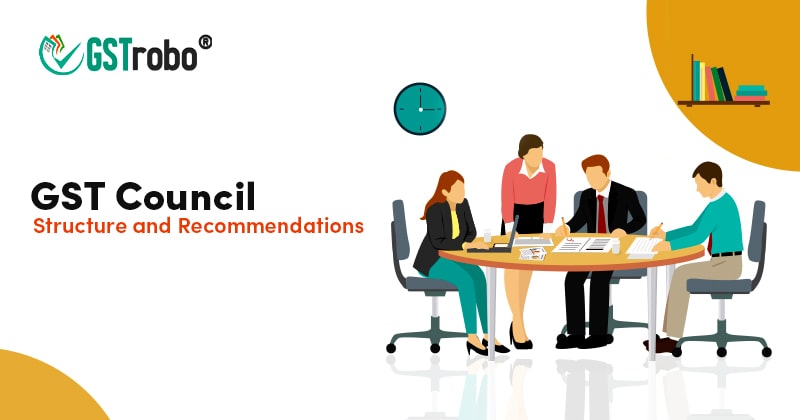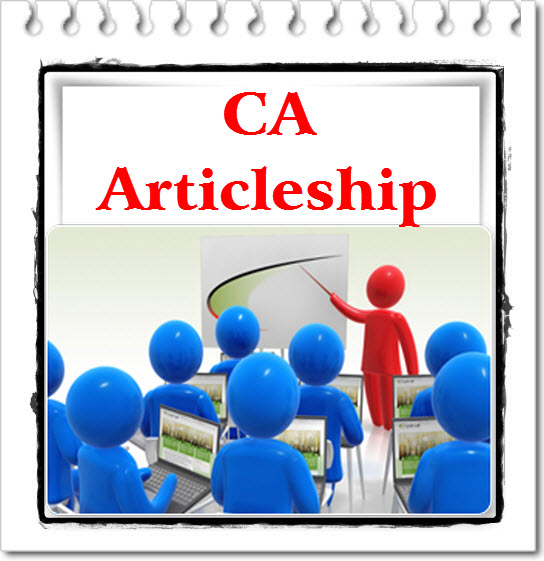Importance of Proper Articleship
05-04-2014CA Gaurav Shah , CA Madhukar N Hiregange, CA Monalisa Khuntia
The Chartered Accountancy course in India is amongst the best of its kind in comparison to the courses offered in other countries. Also, it is rated as one of the most difficult professional courses among all other streams of education in the country.
The reason for the above is the quality and values that the profession of Chartered Accountancy has, and which it wishes to retain. The vast curriculum, along with the rigorous practical training requirement (Articleship), is to ensure that the competent professionals carry the baton of the profession forward.
Theoretical knowledge or practical knowledge alone cannot make a perfect professional. Both theoretical and practical aspects should go hand in hand to become an extra ordinary professional. As swimming cannot be learnt just by reading a book on how to swim, one has to actually jump into the water to learn swimming, likewise just obtaining theoretical knowledge and writing examinations would not provide the results one would like to have. The potential employers invariably examine whether the CA has the conceptual clarity and more importantly knows how to apply the theory learnt. The disparity in the salaries offered at the campus highlight this difference.
The age old adage that – “Practice makes a man/woman perfect” always holds good. Practical training helps to inculcate a disciplined attitude for smart work and develops the necessary skill for the application of theoretical knowledge to practical situations.
It is estimated that those students who apply what they learn in the work done [statutory/ internal audit, tax audit…] as well as learn the theory behind what they have been would be greatly advantaged in their examination especially at the final level.
Articleship is the golden period of a CA Student’s career. How a trainee undergoes it, would have an impact on what type of CA he/she is destined to become. Taking Articleship lightly would have an adverse impact on training and overall learning experience.
Moreover, Articleship training would help the Principal in several ways. Principals can delegate work to the Article trainees and reduce their work pressure. Even by this practical training, a spirit of learning is inculcated in their firm and productivity of staff as a whole increases. By retaining well trained articles, principal may be able to expand his/her firm Thus effective practical training would enhance the reputation of principals and Article trainees could be their future colleagues/ partners.
A few questions often trouble the students: Why is the Articleship training so long? Why is it needed or required?
Some of the students are unable to understand the importance of articleship training and they do not take it seriously. Either they think that it is a waste of time or they are more involved in their theoretical part of studies. Understanding the importance and the fact that one stands a better chance to pass the examination. Further this training would help in better emoluments should prove this point. The impact on future/ career can be examined as under:
We all aspire and work hard for a better career. Is it possible to make a career in Chartered Accountancy without proper practical training? The answer is “no”. Two major career opportunities are available for the chartered accountants after completion of course, viz., job and practice. If we talk about the first one, the pass certificate can at best give them interview letter. It is difficult to face the interview board and convince them of what they want – knowledge of problem solving ability. The experienced interviewers would assess the depth of knowledge or lack of it within no time. Even if one gets a job, one may not be able to perform or deliver the desired results and their survival in organizations could be at stake. At the same time as far as practice is concerned, it is impossible to set up one without practical knowledge.
Once the importance is made understood to the students, the next question arises as to:
When to do the articleship?
Where to do the articleship?
As per the current format of the curriculum, a student having completed first or both the groups of IPCC exams (Intermediate) is eligible to start his/her articleship, which is for a period of 3 years.
The student can undergo his/her articles under a Practicing Chartered Accountant, or a Firm of Chartered Accountants, subject to the eligibility of the CA or the firm.
Just like utmost care is taken by the parents to decide which school/college should the child study in, the decision of selecting a place to do articleship must be decided with utmost care too. This decision should not be taken based on the convenience that would be available to the student during his articleship, but should be based on the quality of the work that the student intends to learn. Guidance/opinion can be sought from various seniors or students who have already done their articleship or are in process of completing it.
Many a times the students decide to get registered for the articleship training under a known/relative practicing CA and chose not to actually undergo training. (Dummy Articles). In the view of the writer, apart from this not helping to gain any practical knowledge, this activity is not permissible by the institute and can cost the student his entire career.
This article provides an insight about the various kinds of firms along with their features in which the prospect article would like to pursue his/her articles.
The firms can be classified as:
- Big 4’s
- Big Firms
- Mid sized firms
Further to the above classification, the firms can be sub classified as:
- Specialized Services firm
- General Practice firm
Big 4’s :
If desired to work for a Big 4, the question that arises would be for which team to work. Big 4’s have various areas of practice. Audit & Assurance, Direct Taxes, Indirect Taxes, Internal Audit & Risk advisory services, Mergers & Acquisitions and many more. The above mentioned areas would also have subdivisions. Since the student would be just starting his career, it would be very difficult for him/her to decide which area to work in. The area can be chosen based on the area of interest or an opinion can be sought from a senior. The area of work could also be chosen keeping in mind the subjects that the students have studied in IPCC. An area which the student thinks he/she had difficulty in studying could be chosen so that the fundamentals of that subject would become strong.
The best feature about a big 4 is that the systems that are developed and implemented by them are the best of its class. Every activity/assignment has a process associated with it. The big 4’s have a prescribed system/code of going about with every activity. Since the systems are developed for every activity, the process of accomplishing the work becomes much easier and simple. This does not mean that the work as such becomes simple. But it helps to focus better on the said assignments than to plan out for how to go about with the assignment. The procedures in respect of documentation, reporting etc. are very substantiate but also very helpful.
Another feature about working in big4’s would be that most of the tasks are assigned to and executed in teams. Working with teams having senior and experienced persons would help the students to articulate better knowledge and skills.
Big Firms :
A big firm would be one with a size of 10-20 partners. Though the size is big, it might not be as big as a Big 4. These firms also have a wide area of expertise which includes Audit, Taxation, and Internal Audit, etc. The only difference would be that these firms are not present globally and hence would be difficult to provide services for clients having multiple locations. Another advantage in these kinds of firm over big 4’s would be that the policies would not be so strict and as an article trainee, the article would be allowed to get trained in various teams as desired by him. Also, in these kinds of firms, the articled student would be getting a more variety of experience compared to the mid sized firms. These firms, because of their size and experience, are usually empanelled in the list of firms eligible to audit the Public Sector Companies including Public Sector Banks. The firm may also be eligible for other special assignments given by the Comptroller and Auditor General of India.
Mid Sized Firms:
The No. of partners in these kinds of firms may be between 1-10. A proprietary firm or a firm with 2- 3 partners could also be considered as a midsized firm considering the size of operations. Though, these firms would not have multi specialization services, they might be into
- General practice in all areas; or
- One particular specialized area of services.
In these firms a student would be exposed to all levels of work early; from basic verification to finalization in a short time. Also, the student may be able to handle the work independently within his/ her articles completion.
Each kind of firm has its own advantages.
If a student has a particular area of interest and wishes to continue in that area as a career, then he/she should choose to do articles in such a firm which is totally into one area of specialization. If a student is not very sure about what his area of interest is, it is preferable to join a midsized firm which is into general practice in all areas.
The advantage in these kinds of midsized firms would be that the level of hierarchy would not be like the big firms. The article might have a chance to directly interact with the partner of the firm which would help him/her in getting a more exposure in crucial areas.
These kinds of firms may not have ready implemented systems or procedures to conduct their regular assignments, which would give a chance to the articles to apply their own mind and try to develop the systems as required. This would help them having a better problem solving techniques.
The above descriptions about the various kinds of firms can be just a referral to take a decision as to which firm to be chosen. However, this cannot be exhaustive. A student should also keep in mind his career objective and other factors like, whether he/she wants to stay in practice or in industry, whether to get specialized in a particular area or not and other factors as the case maybe.
The Institute has prescribed certain minimal stipend norms to the articled clerks which would be paid by any of the firms. However, many firms pay more than the prescribed norms depending upon the work and efforts put in by the student. However, in the opinion of the writer, selection of the firm shall not be only based on the stipend that the firm is offering, since articleship period is as good as study period and remuneration





